In today’s rapidly evolving world, the pursuit of continuous economic growth remains a central focus for nations. However, this ambition must be carefully balanced with the urgent need for climate action. Governments and corporations will have to work together to transition towards more sustainable development pathways - ones that not only drive progress but also safeguard the environment for future generations.
Malaysia has taken clear and deliberate steps in this direction, setting its sights on achieving net-zero emissions by 2050. This long-term commitment is underpinned by forward-looking policies, most notably the National Energy Transition Roadmap (NETR), which lays out the framework for reshaping the country’s energy landscape. Through this strategic roadmap, Malaysia is working to reduce its reliance on fossil fuels, increase renewable energy capacity, and position itself at the forefront of the global energy transition.
Central to these decarbonisation efforts is the advancement of green hydrogen. Recognised as a key pillar of Malaysia’s clean energy future, green hydrogen offers a zero-emission solution that releases only water vapour when used—leaving behind no carbon residue, unlike fossil fuels. As a versatile and scalable energy carrier, green hydrogen holds the promise of transforming industries, powering clean transportation, and enabling deeper integration of renewable energy into the national grid—paving the way for a more resilient and sustainable economy.
Despite its vast potential, the development of green hydrogen in Malaysia remains in its emerging stages, especially in small-scale and commercial applications. Establishing a comprehensive hydrogen value chain, - from renewable energy generation through to hydrogen production, conversion, storage, and end-use delivery - is still in its early phase of implementation.
This presents both a challenge and an opportunity for Tenaga Nasional Berhad (TNB), which envisions a future where hydrogen plays an integral role in Malaysia’s diversified and sustainable energy mix.
In response, TNB has launched Project Renewable Energy Applications for Clean Hydrogen (REACH). Project REACH aims to integrate green hydrogen production within an operational power plant environment, showcasing the feasibility of coupling renewable energy sources with hydrogen technology. The project marks a significant step forward in advancing hydrogen economy and accelerating its transition to cleaner energy systems.
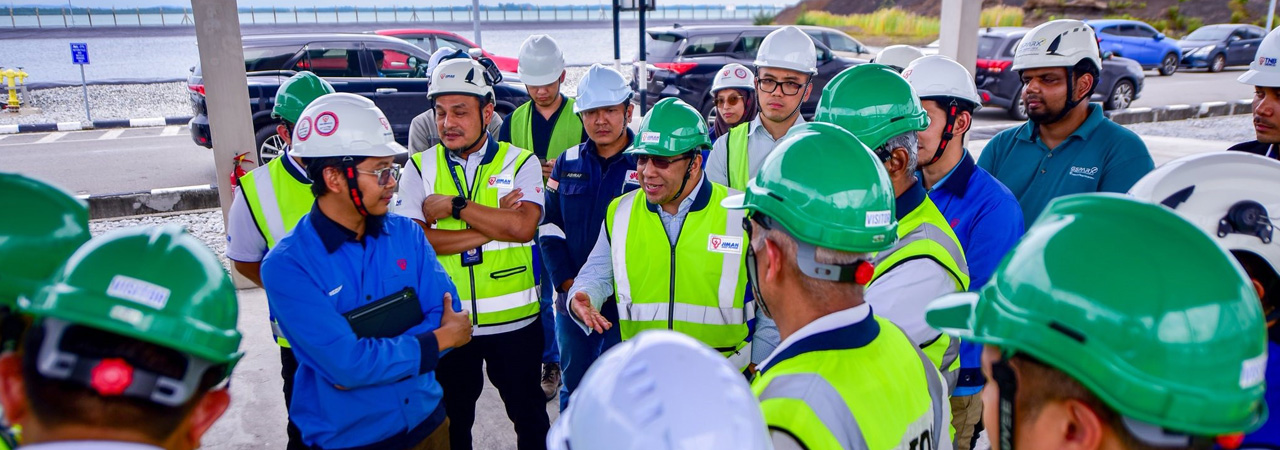
Project REACH: Integrating Clean Energy Into Existing Power Infrastructure
A key pilot location for this initiative is the Tuanku Muhriz Power Station, better known as Jimah East Power Plant—one of the country’s leading ultra-supercritical coal-fired facilities with a generating capacity of 2,000 MW. In operation since 2014, the plant has consistently delivered reliable and efficient energy to the national grid. Now, it also represents a promising testbed for transitioning traditional power generation assets towards cleaner technologies, including the adoption of green hydrogen solutions through Project REACH.
Project REACH is an innovative initiative centered on harnessing solar-powered electrolysis to produce green hydrogen within the grounds of the Jimah East Power Plant. This project aims to demonstrate the integration of renewable energy and hydrogen production within an operational thermal power station—laying the foundation for future decarbonisation efforts.
As part of the initiative, a rooftop solar photovoltaic (PV) system will be installed to supply clean energy for hydrogen production. This clean energy source will power the production of green hydrogen, showcasing how renewable energy can be directly integrated into existing infrastructure.
Next, the project will evaluate different electrolyzer technologies to determine the most efficient and cost-effective method for producing green hydrogen. This critical step ensures that the technology adopted is not only environmentally sustainable, but also scalable for future national use.
Building on these efforts, Project REACH aims to assess how green hydrogen can be used directly on-site - beginning with generator cooling, while also exploring other practical applications within the plant. Through this, TNB hopes to unlock new possibilities for hydrogen use in traditional power operations, setting a precedent for cleaner energy practices.
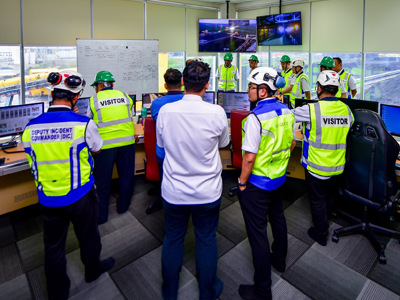
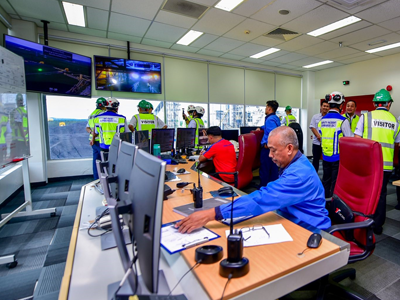
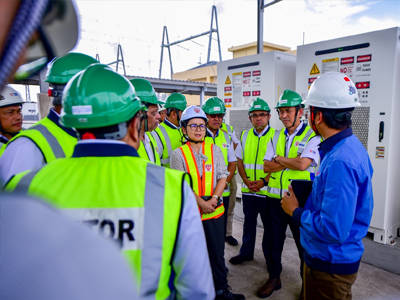
Making Use Of Space To Create Hydrogen from Solar
The journey of Project REACH begins with Phase One, in which, TNB focuses on laying the foundation by installing a 500-kilowatt peak (kWp) rooftop solar photovoltaic (PV) system and a 1-megawatt-hour (MWh) Battery Energy Storage System (BESS). These components are seamlessly integrated into the existing Jimah East Power Plant grounds, utilising practical spaces like parking bays and the plant’s sports complex. The goal is to establish a stable and clean energy source to support the next stage of hydrogen production.
Running in tandem with this is Phase Two which introduces the heart of the project - the green hydrogen production system. During this stage, engineering designs are finalised, equipment is procured and installed, and thorough testing and data collection are carried out to ensure safe, efficient, and scalable hydrogen production.
Finally, Phase Three brings everything together. The solar PV, battery storage, and hydrogen systems are integrated into a single cohesive setup. This final stage focuses on system performance evaluation, data analysis, and exploring how the green hydrogen produced can be used in real-world applications, including generator cooling, with the potential to expand further.
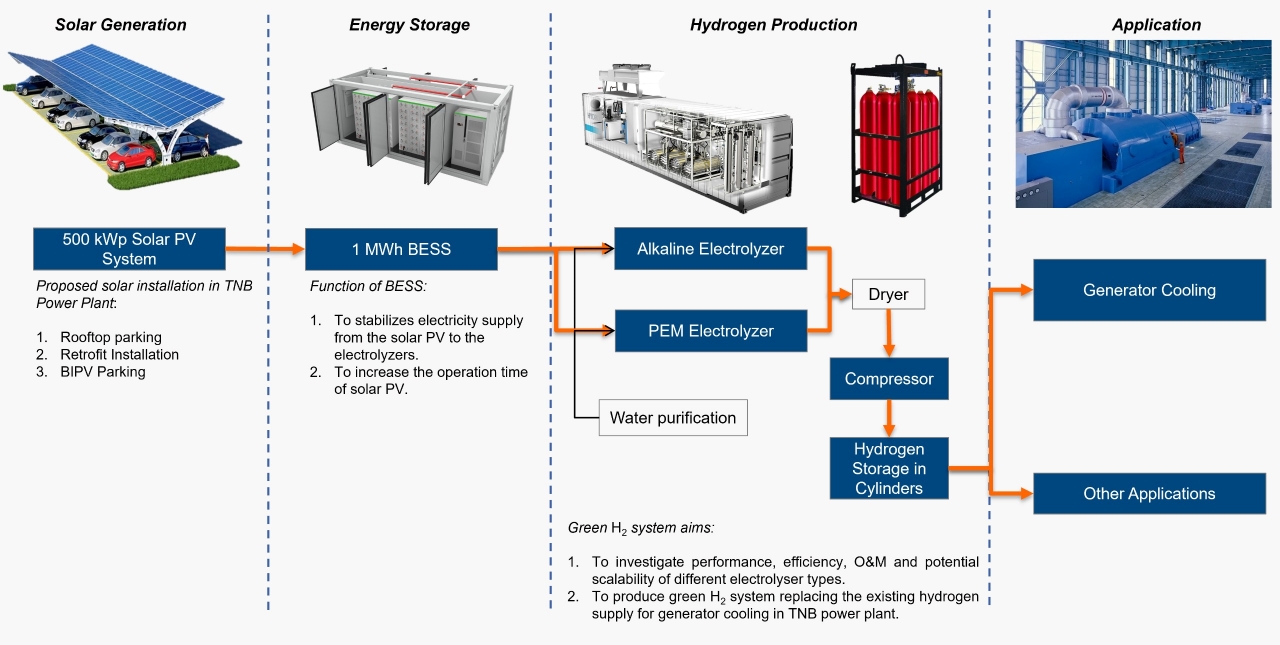
Figure 1: Conceptual of Project REACH
Empowering Talent For A Hydrogen-Ready Future
As Malaysia’s hydrogen industry begins to take shape, TNB is proactively laying the groundwork to ensure local talent is prepared to lead this emerging sector. Recognising that the energy transition requires both innovation and expertise, TNB established its dedicated Hydrogen Task Force - an internal initiative focused on identifying how hydrogen can be effectively integrated into the company’s business operations as a clean energy solution.
To further build capacity, TNB has expanded its training ecosystem through Institut Latihan Sultan Ahmad Shah (ILSAS), its dedicated learning and skills development centre. ILSAS offers a five-day hydrogen course open to the public, designed to provide a comprehensive understanding of hydrogen technologies, including:
In addition, TNB has embedded a hydrogen module within its Subject Matter Expert (SME) training programme - marking an important step in preparing its workforce to manage and operate hydrogen-powered facilities. These initiatives underscore TNB’s commitment not only to technological advancement but also to nurturing the human capital essential for a just and inclusive energy transition.
Driving Decarbonisation Through Green Hydrogen Innovation
Project REACH represents a bold and necessary step in advancing green hydrogen as part of Malaysia’s transition toward a low-carbon future. By sourcing hydrogen from renewable energy, the initiative positions the country to become a regional leader in clean energy innovation.
Beyond its economic promise, green hydrogen offers substantial environmental benefits, most notably, the potential to significantly reduce greenhouse gas emissions and support long-term decarbonisation goals.
With its integration of solar-powered electrolysis, battery storage, and intelligent energy management, Project REACH showcases how renewable energy can be effectively embedded within existing thermal power infrastructure, reducing dependence on conventional fuels.
It is a working concept designed to demonstrate the feasibility, efficiency, and scalability of renewable-based hydrogen solutions, and with this first decisive step by TNB, it can potentially set the benchmark within the national push for carbon emission reduction and a cleaner, more sustainable energy landscape for Malaysia.